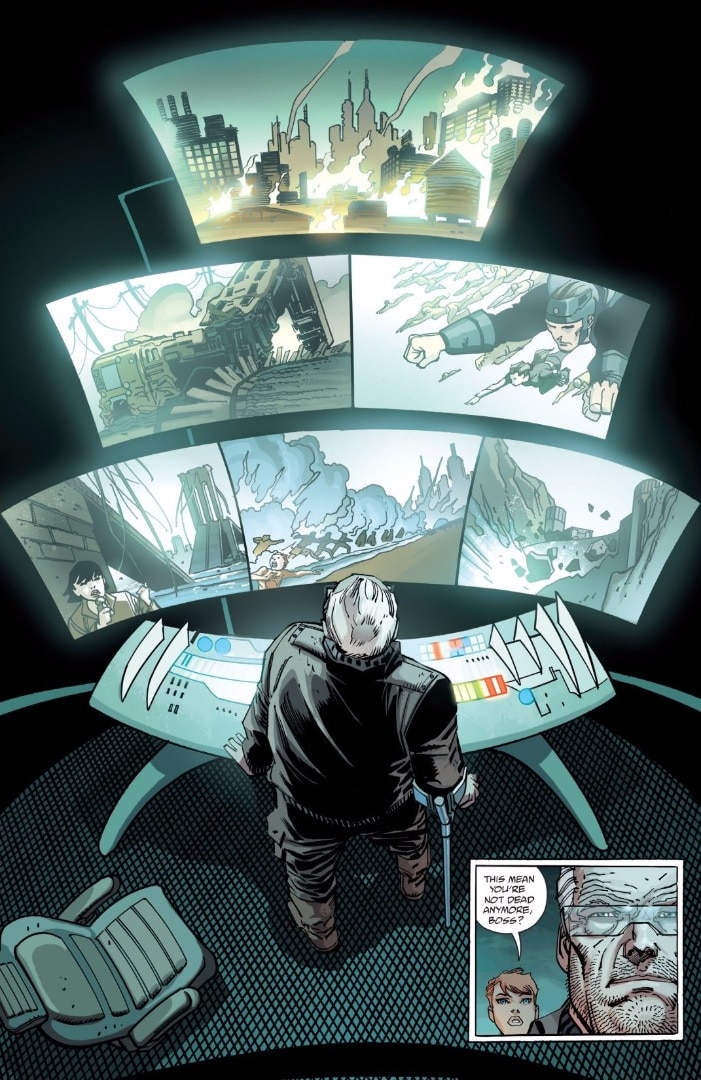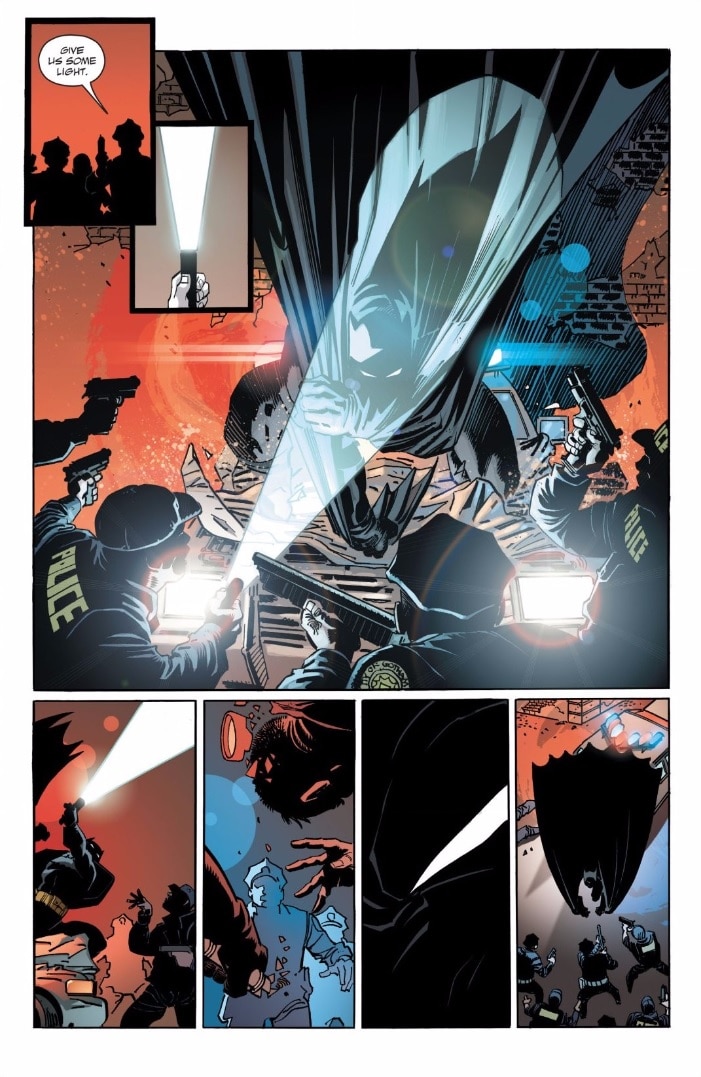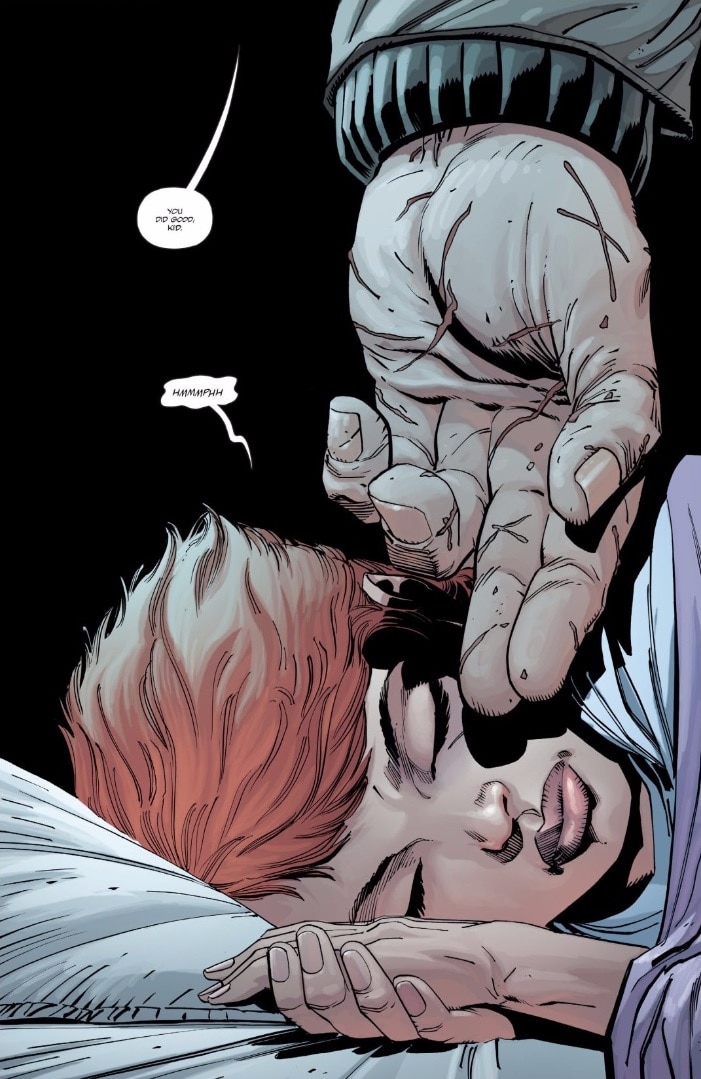I’ll be the first person to admit my relationship with the Dark Knight universe is...well, a bit strained. It’s not that I don’t like THE DARK KNIGHT RETURNS—I understand the importance of Frank Miller’s work as well as the next self-respecting Batman buff, trust me, but something about the stark differences between the Dark Knight of Miller’s world and the Dark Knight I’d crafted in my own head made the whole story a bit of a challenge for me.
So you can probably take a wild guess that I didn’t know quite what to make of the news that there’d be a third Dark Knight tale. I just wasn’t sure if I was really ready to tackle another story about a Batman I’d already pretty much written off as too gruff, too mean, and too old for me to really relate to.
Still, both as a fan and as a historian, I knew that it wasn’t something I could just turn a blind eye to. It had been ages since I’d revisited either The Dark Knight Returns or THE DARK KNIGHT STRIKES AGAIN, and if nothing else, giving Miller’s Batman another shake seemed only fair considering how much Bat-mythology owed back to it.
Nine issues later I can safely say that BATMAN: THE DARK KNIGHT: MASTER RACE isn’t what I was expecting at all...and that’s actually awesome.

Master Race opens on a world that’s been without a Batman for a few years. This wasn’t terribly shocking—Bruce Wayne’s been an old, retired super hero since the start of this universe, so having him fade into obscurity only makes sense. That was actually one of the things that kept me from really embracing the Dark Knight universe to begin with—confronting the mortality of your heroes is a tough thing to do.
So this is a Gotham with a Batman who is all but an urban legend, passed around by terrified criminals like a ghost story. Except, now? One of those terrified criminals has video...and it’s not just any video. It catches Batman attacking a member of the GCPD.
At this point, I had to pause. My main instinct here was to resist this image of Gotham’s future. After all, at first glance, it looked like everything Miller’s Dark Knight stories did that put me on edge: a bleak look at the city, a hero far outside his prime, maybe even turned evil… It was a lot to take in. I took a step back and really thought about it, and something strange happened.

I realized how many of my concerns about Miller’s world circled back to...well, the legacy that Miller had kickstarted all those years ago. I realized how much history this corner of the comic book store actually has, both on the page and in real time. It suddenly felt massive in scale to me. The fact that this world and the stories inside it had been built up over decades, to the point where I could open this first issue and be presented with this bleak view of the future and actually think back to the previous installments and follow the logic.
It was like I blinked and the book stopped feeling like a violation of a universe that I’d invested so much time in and started feeling like a roadmap for something completely different. There was a history here all it’s own, and a population of characters who lived and breathed that history in a way I’d been valiantly trying to ignore for a long, long time.
The irony of how long I’d been telling myself that these characters were too strange because they were “too new” or “too different” came crashing into my head like a ton of bricks. This Bruce wasn’t new at all—he’d been kicking around this version of Gotham for decades (literally and figuratively). This Robin? She’d been here so long she wasn’t even Robin anymore—she’d become Batgirl. These characters all had stories to tell, and they’d been telling them for a lot longer than I’d been willing to listen.
At this point, I had to shake it off, set the book down, refocus, and start again with this new realization sticking to the front of my mind.

This time through, those moments and characters I’d tried so hard to discount as too dour or too bleak just seemed...well, fun to me. There’s something freeing about allowing yourself to just lean into the most extreme angles on things you like, and honestly, what’s more extreme than watching one super hero throw another super hero through the Washington Monument? That version of Bruce I’d barricaded myself against for years? Now, when he’d call Carrie Kelley—the sidekick I’d spent so many years trying to pretend didn’t count—a “good soldier,” it felt emotional, maybe even heartfelt now that I could see how the history between these two characters had grown and changed.
And that’s not even touching on the new way this third Dark Knight comic uses the Flash, who winds up with both of his legs broken, but with a brain that is still well and truly tapped into the Speed Force. Or Green Lantern, who may have lost the hand that wields his ring, but still has the willpower to use it.
My journey through Frank Miller’s Gotham stopped being scary the second I stopped expecting it to be anything other than exactly what it is. And I’ll be totally honest here—I wish I would have gotten to this point much sooner. These stories are different, sure, and these characters aren’t the versions you read about each week in the main line of books, but that doesn’t make them any interesting. And, as I’ve come to realize, it certainly doesn’t make them any less worth your time.
Meg Downey writes about Rebirth for DCComics.com and covers Legends of Tomorrow for the #DCTV Couch Club. Look for her on Twitter at @rustypolished.
BATMAN: THE DARK KNIGHT: MASTER RACE by Frank Miller, Brian Azzarello, Andy Kubert, Klaus Janson, Brad Anderson and Alex Sinclair is now available in print and as a digital download.




















